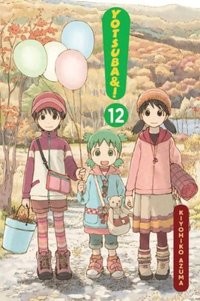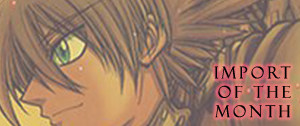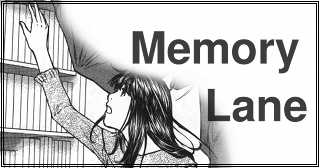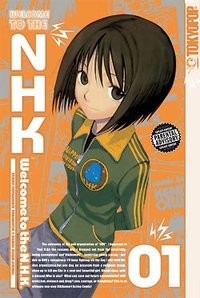RIGHT TURN ONLY!!
Rhapsody in Pink
by Carlo Santos,

As I browsed through Amazon to check on some information, I stumbled into the "Manga Bestsellers" page, and two things caught my eye: Attack on Titan is EVERYWHERE right now ... and Christopher Hart how-TO Books are also top sellers.
How?! How is this champion of artistic mediocrity STILL able to hawk his work?!
I only hope that the aspiring artists who pick up Hart's books eventually grow into a more sophisticated "manga style" someday. Or, at least, achieve a proficient drawing style that they are happy with...
A CENTAUR'S LIFE

Vol. 1
(by Kei Murayama, Seven Seas, $12.99)
FROM THE BACK COVER:
"Himeno is a sweet, shy little centaur girl. In her world, everyone seems to be a supernatural creature, and all her classmates have some kind of horns, wings, tails, halos, or other visible supernatural body part. Despite their supernatural elements, Himeno and her best friends, Nozomi and Kyoko, have a fun and mostly normal daily school life!"
EVIDENCE FOR:
A Centaur's Life is aggressively slice-of-life, dropping readers right into Himeno's school day without any pretentious exposition or whacked-out origin stories. As it turns out, this contrast between mythological creatures and everyday life is exactly what makes the series' quiet sense of humor work. Imagine putting on a school play, for example, and making sure that the props can take the weight of a half-horse half-human hybrid. Or think of how weird school sports would be if a classmate had an obvious physical advantage—how do you even win against someone with twice as many legs and lower body strength? The series even aims for some social commentary, using the different creature races as an analogy for actual human races (listen to what Himeno's dad says about the first centaur president in America). The humor comes out in the visuals, too, where Himeno often has to guide her body around human-sized things, and wordless sight gags or awkwardly silent panels do a better job of being funny than loud overreactions. The character designs also show a lot of imagination in the way each student has a smattering of monster features.
EVIDENCE AGAINST:
A Centaur's Life has some pretty neat ideas about supernatural creatures living in today's society ... but then it never goes anywhere with those ideas. Instead, this series is content to recycle the same old slice-of-life scenarios that show up everywhere, but with a pair of wings or ears or a tail slapped onto it. Chapter 1, for example, starts out with Himeno receiving a confession of love from a fellow student—a situation that requires zero creative thinking to come up with. Several pages after that, a scene where Himeno and friends check out each other's anatomy comes off as uncomfortable and not very funny at all. There are even some gags (mostly in the first half) that have nothing to do with being creatures; instead, it's just generic school humor that could be applied to any set of humans. The artwork also falls short in some areas: just look at all the empty backgrounds and lack of energy in the characters' poses. Obviously, they don't have to be in Shonen Jump action mode all the time, but there's definitely some shaky anatomy going on here.
FINAL VERDICT:
It has some creative and funny ideas, but doesn't capitalize very much on them so far. This volume gets a C+ but has potential to be better.
FROM THE NEW WORLD

Vol. 1
(by Yūsuke Kishi and Tōru Oikawa, Vertical, $10.95)
FROM THE BACK COVER:
"Saki and her schoolmates enjoy what they consider normal lives in a peaceful provincial setting. Only, their village cannot be of today; its customs differ from those of any known Japan. When the buddies set out on a fateful journey, what awaits are shattering truths—for them and for us."
EVIDENCE FOR:
The premise of From the New World would be pretty fertile storytelling ground all by itself—in the far future, humankind has reverted to rural living and kids develop psychic abilities as part of puberty. But what makes the series so impressive is how many other ideas it squeezes in, presenting an entirely new vision of human civilization. The school system is now driven by psychic aptitude, rather than intellect. Lurking in the countryside are "rats" that exist on the border between beast and human. Even the simple act of making friends and falling in love is way more intense than what 21st-century kids go through. Through it all, there's a strong air of discovery and mystery: Saki and her friends' excursion may be a sprightly summer adventure, but there are also some really scary things lurking out there. The heavy shading, detailed backgrounds, and crisp black-and-white contrasts in the artwork definitely add to the impact of those scary moments. Chase scenes and psychic feats also make a strong visual impression—but the real showstoppers are the strange creatures lurking throughout. With their grotesque, mutated features, they serve as a powerful reminder that this future is anything but utopian.
EVIDENCE AGAINST:
Despite all the hard work that goes into the realistic backgrounds and eye-catching monsters, there's one area where From the New World falls short artistically: character designs. Saki and her classmates could have easily been pulled from the most banal middle/high-school series, with only slight variations of eyes and hairstyle serving as identifiers. Other than that, they all have about the same height, the same face shape, and (for the girls) the same absurd proportions. Speaking of absurd, the poorly placed fanservice is another unenjoyable aspect of the series. Let's say there's an important plot exposition scene going on, and so the girls are having a dead-serious discussion ... while groping each other in the bath. How does that even make sense? In fact, the story as a whole seems confused, unsure of what it wants to be: is it a high-concept science fiction work, or a fanservice-heavy teenage romp that just happens to take place in the future? The later chapters in this volume eventually phase out the adolescent frivolity and focus on adventure and battle, but it's a weird, bumpy ride getting there.
FINAL VERDICT:
It isn't always consistent in tone, and wow the female characters get naked a lot, but the imaginative concept is good enough for a B.
PINK

(by Kyōko Okazaki, Vertical, $16.95)
FROM THE BACK COVER:
"Yumi moonlights as a call girl because her day job doesn't pay enough for her to feed Croc, her voracious pet. Haru, an aspiring novelist who has nothing to say, sleeps with a woman his mother's age not just for the money but to work on his 'powers of observation.' When Yumi's step-mom turns out to be Haru's sugar mommy, it's time for—new shenanigans."
EVIDENCE FOR:
Think of Pink as a mirror-image to Okazaki's Helter Skelter: while the latter is about the curse of celebrity, this one is about ordinary folks, taking on the struggles of twentysomething city life. But that doesn't necessarily mean it's boring: if anything, Pink is full of creative spirit, pirouetting through tragicomic episodes like Yumi's apartment getting flooded from a toilet leak, or getting her stuff stolen while out on one of her jobs. Okazaki is also a master of quickly sketching out the characters' personalities: in just a few chapters we're instantly pulled into the world of the aspiring creative, the freewheeling fashionista, the scheming cougar, and other modern-day archetypes. The fluidity of their relationships—a merry-go-round of sex, jealousy, boredom, and longing—also makes the story an addictive soap opera. And when it hits that wicked double twist at the end, well ... prepare to be mind-blown. The vibrant story is complemented by sketchy, loose-lined art, where the characters' intense expressions and showy gestures really bring emotion to the fore. The page layouts and visual style also steer clear of any unnecessary clutter, so that the story can move along quickly—at the speed of life in the city.
EVIDENCE AGAINST:
The start of Pink isn't all that great, as Yumi's self-indulgent lifestyle and her cynical monologues oversaturate the early chapters. It's just hard to get into the story, or even like the main character, when she comes off as really full of herself. It's not until more characters show up, bringing out other aspects of Yumi's personality (as well as their own), that the plot finds its groove. But even then, the purpose of the story is yet to be found: Haru and Yumi spend most of their time goofing off until about midway through the book, when their relationship gets more serious and conflicting forces intrude. Sure, some people enjoy following along with a cast of characters and not worrying about what happens next, but a specific goal or a common enemy would have made the first half more impactful. The art style is also less than perfect, with a lot of scenes that look just plain sloppy (as opposed to "vibrant"), and essential details like backgrounds or shading completely left out. This sloppiness, and the characters' cartoony appearance, takes away from the realism of the story.
FINAL VERDICT:
The visuals and the early story take some getting used to, but stick with it and you'll discover a whirlwind of drama that rates a B+.
TORIKO

Vol. 19
(by Mitsutoshi Shimabukuro, Viz Media, $9.99)
FROM THE BACK COVER:
"Toriko and friends face off against the gruesome head chef of the Underground Cooking World, Livebearer, who wants nothing more than to eat their memories of food. In order to keep the contents of their brains from being scarfed down, Toriko will have to eat the grossest, squirmiest, biggest and most explosive foods ever to win a high-stakes game of 'Gourmet Tasting!'"
EVIDENCE FOR:
There's no stopping Toriko when it gets locked in and starts spewing crazy ideas. This volume offers a little bit of everything that makes the series great: extreme cuisine (who likes poisonous and exploding foods?), fierce battles (a ferocious panda is the highlight), and the pure thrill of competition, all wrapped up in a "Concentration"-style card game. Despite the game's arbitrary rules, the strategy gets pretty intense toward the end, especially when gourmet psychic Coco starts rattling off all the strategies and mind tricks he'd planned in advance to outsmart Livebearer. (Death Note, eat your heart out.) The teamwork involved also adds to the fun: this isn't just a single-character arc, but one that shows off everyone's talents, including Coco's intellect, Komatsu's culinary technique, and of course, Toriko's superhuman appetite. As always, larger-than-life visuals are part of the entertainment too—a literal mountain of pudding, oversized plants and animals, and Toriko's exaggerated combat moves all prove that bigger is better when it comes to manga like this. Numerous speedlines and special effects also fill each scene with energy, and an intriguing teaser about the heroes' next quest leads in nicely to the next volume.
EVIDENCE AGAINST:
The biggest problem with this volume can be summed up in one sentence: it's a bunch of guys playing cards in a room. Does that sound like eye-popping excitement to anyone? Didn't think so. Sure, the series deserves some credit for trying to diversify—and for making the characters get really worked up over a bunch of mental and tactical maneuvers—but this is not the Toriko most fans come to see. The artwork quickly becomes formulaic, with lots of facial closeups and back-and-forth dialogue scenes being used to tell the story. The only legitimate, all-out action sequence is Toriko's battle with the killer panda; everything else involves scarfing down food (which is kind of "mid-level" action) or simply discussing strategy with one another. The fact that it's a made-up card game also means that the characters are constantly having to explain the rules and why they plan to carry out certain moves. For a series that's all about wild visuals, it's a shame too see so much of it getting taken over by text—and the change of storyline in the last chapter is simply too little, too late.
FINAL VERDICT:
The sheer enthusiasm of the characters makes up for the fact that it's not a conventional fighting arc—and the food ideas are as crazy as ever. Rank this one a B.
YOTSUBA&!

Vol. 12
(by Kiyohiko Azuma, Yen Press, $11.99)
FROM THE BACK COVER:
"Oops! Your shoe! Your shoe! Your shoe came untied! But don't worry! Tora taught Yotsuba how to tie a bow Like a Butterfly! Now Yotsuba can tie Juralumin's ribbon aaaall by herself. Huh? Why are Yotsuba's hands blue? Well, see, there was this reeeally pretty blue paint... and Yotsuba thought Daddy would want his stuff to be reeeally pretty blue too... Are Yotsuba's hands gonna stay blue forever and ever?!!"
EVIDENCE FOR:
Since it takes so long for new volumes to come out, here's your regular reminder that Yotsuba&! is still ridiculously good. Sometimes it achieves greatness through charming, been-there-done-that moments—like when Yotsuba learns to tie shoelaces and ribbons, or when she discovers a can of furniture paint and gets it everywhere. Other times, it goes past simply being cute and aims for more direct humor, like Yotsuba trying to play a "trick" on Halloween (a scene that has since been immortalized across the internet) or spinning around in a hammock during a camping trip. The relaxed pace and likable supporting characters also add to the feel-good factor, so it isn't just about Yotsuba being an overenthusiastic little kid. If anything, the reactions of adults and older kids around her are equally entertaining. The simple character designs and Yotsuba's wild expressions, so full of energy, make an instant visual impact—yet fans can just as easily lose themselves in the sophistication and detail of the backgrounds. Well-organized panel layouts also make it easy to follow the story, and every now and then, there are wordless scenes that just take one's breath away.
EVIDENCE AGAINST:
There's very little that Yotsuba&! does wrong; the series' only real flaws are the things it doesn't do. Most notably, there is no strong, overarching plot to guide the series forward, apart from the fact that it sometimes references previous events. Yotsuba just throws herself into one particular activity for 30 pages, and then when something else catches her interest, a new and totally unrelated chapter begins. Only the camping trip is spread out over multiple chapters, and that's really more a collage of various events related to outdoor leisure (putting up a tent, preparing dinner, roasting marshmallows, going to bed in a sleeping bag) than it is a story with a beginning, middle and end. The simplicity of Yotsuba's personality might also grate on some nerves after a while—she yells at everyone and everything, mispronounces words, and gets overexcited about everyday phenomena. Are actual six-year-olds really this one-dimensional? Yotsuba's limited range of emotion also constrains the series as a whole; it'll give you lots of warm fuzzies but not much else.
FINAL VERDICT:
Even if it's only good at delivering feel-good moments (and not, say, badass action scenes or insane plot twists), those are some of the best moments to come out of any manga anywhere—which is why this gets an A-.

OUROBOROS

Vol. 1
(by Yūya Kanzaki, Shinchosha, ¥514)
FROM THE BACK COVER:
"Fifteen years ago, Ikuo Ryuuzaki and Tatsuya Danno lost a loved one, and ever since then they have sworn vengeance against a man protected by a powerful organization. In order to find this fated person and get their revenge, Ryuuzaki becomes a police detective, while Danno goes into the yakuza underworld. And as for the man that these two are chasing, his powerful organization happens to be ... the police force of Japan!"
EVIDENCE FOR:
Ouroboros is a police procedural that manages to have it both ways: the main character is a quirky crime-solving genius, but he's got a dark side at the same time. Ryuuzaki's tendency to act like a goofball, and go off and do his own thing, makes him instantly likable—but it's his sharp mind and stand-up principles that really solidify his character. Meanwhile, his mob connections—courtesy of childhood best friend Danno—add another wrinkle to the story. Will the rest of the police force ever catch on to how this "genius detective" gets his tastiest nuggets of information? The individual cases in this volume also offer some pointed observations on good and evil in society, where common criminals are well-intentioned but do terrible things out of desperation, and where positions of the greatest power and responsibility are often the most abused. The deep shadows and bold-lined artwork are an ideal match for this hard-boiled story, and it doesn't pull any punches during violent scenes either. Ryuuzaki's distinctive character design also stands out nicely (it's hard to miss a guy dressed all in white), like a beacon of light among the dark suits and dingy streets of his world.
EVIDENCE AGAINST:
Although it tries to feature a unique main character with unusual connections, Ouroboros is still a conventional crime drama in most other ways. The cases Ryuuzaki has to solve are filled with predictable subject matter: drug dealers, serial killers, the porn industry, and other shady pursuits. The "twists" that reveal the culprit of each mystery don't even try to be surprising; of course the bad guy is going to be the one who seemed completely harmless. The supporting cast is another area of weakness, as it seems to be populated entirely by stock characters: the alcohol-loving section chief, the ambitious female officer who's tough on her peers, the rival department where everyone has a serious case of smugness. And it looks like Ryuuzaki and Danno will be taking a long time to catch up with "the man from their childhood," so prepare for a lot of unrelated, one-and-done cases. Sloppy backgrounds are the biggest artistic deficiency in this volume, as photo-referenced cityscapes or blank spaces become an easy crutch to fall on. Frequent talking-head dialogue scenes also take away some of the energy in the visuals.
FINAL VERDICT:
Although it follows most of the rules of a typical crime drama, Ouroboros benefits from a fascinating main character and a gray sense of morality that will leave readers intrigued.

WELCOME TO THE N.H.K.

(by Tatsuhiko Takimoto and Kendi Oiwa, Tokyopop)
When people sing the praises of series like WataMote and Outbreak Company, they ought to look back and thank Welcome to the N.H.K. for existing. This one is the granddaddy of them all, the shocker (for its time) that popularized the "otaku loser pokes fun at his or her own lifestyle" subgenre today. It begins with Tatsuhiro Satou, a 22-year-old hikikomori (shut-in) who sits around in his apartment all day doing nothing. Because of his precarious existence, and easily-influenced psyche, he soon falls into a series of life-destroying mishaps: playing ero-games all day and trying to creep on little girls, getting sucked into a multi-level marketing scheme, and scariest of all, befriending a girl named Misaki who thinks she can "cure" him.
Although billed as a comedy—N.H.K. certainly has its share of pop-culture references and humorous jabs at the geek lifestyle—it's actually very, very dark, examining aspects of society that most people would rather not look at. Sure, it starts out being about the quirks of anime fandom, but that's just because it's the common language that the target audience speaks. The real subject of Welcome to the N.H.K. is about the dangers of addictive behavior, and how young people fall through the cracks just because they don't fit in with "normal" standards. It does seem to lose sight of the message in the later stages of the story, though, as Tatsuhiro and Misaki's relationship grows more dysfunctional and becomes a non-stop drama-go-round instead a commentary on society.
So it's too bad that Welcome to the N.H.K. has lasped from publication, because it makes a very important point—and the other series that have spawned from within that subgenre sometimes miss it. Fortunately, specialty stores and used-book dealers still have plenty of copies in stock. Just don't blow all your money shopping online while you go looking for it.
discuss this in the forum (23 posts) |